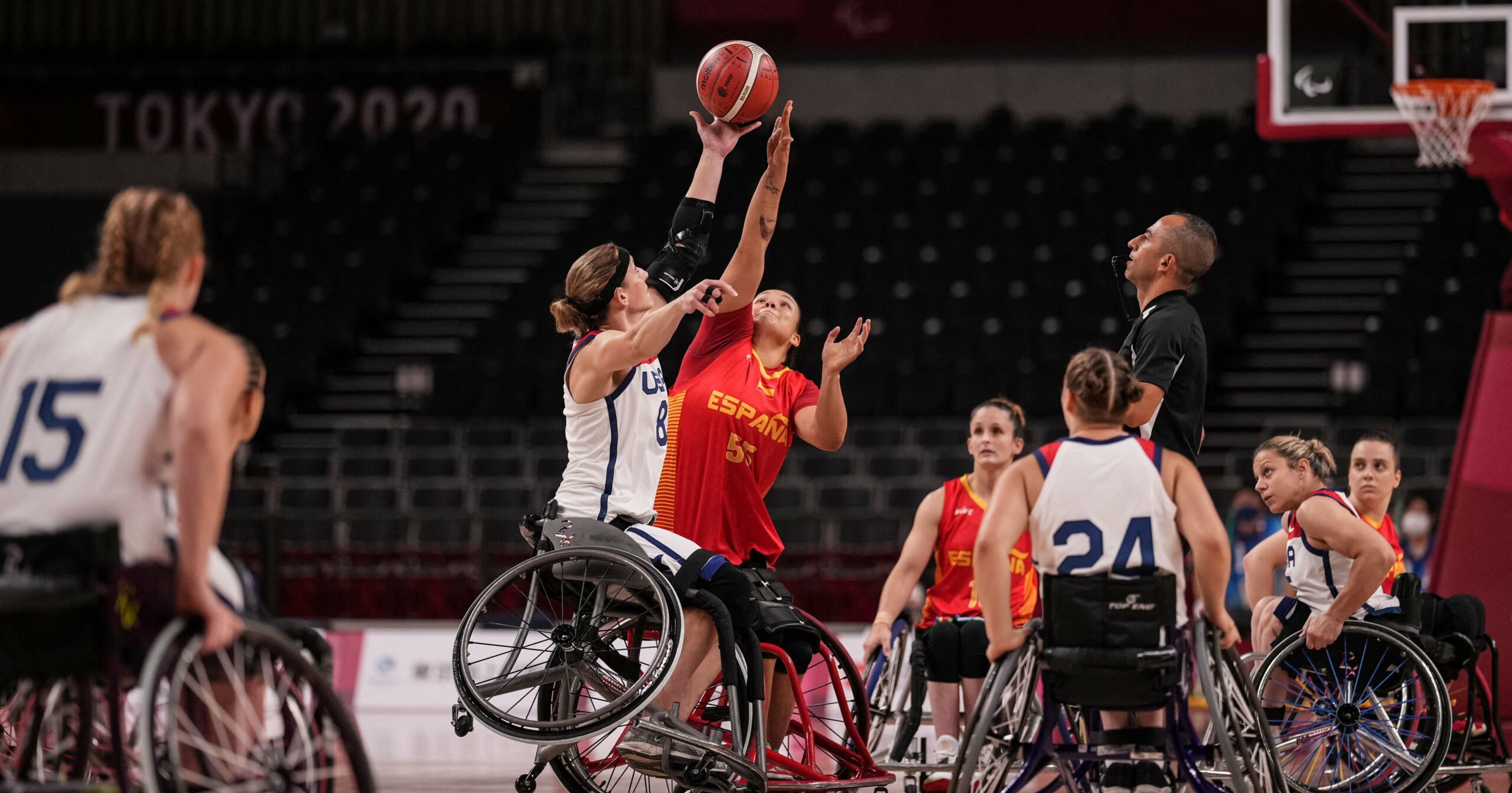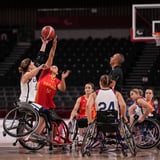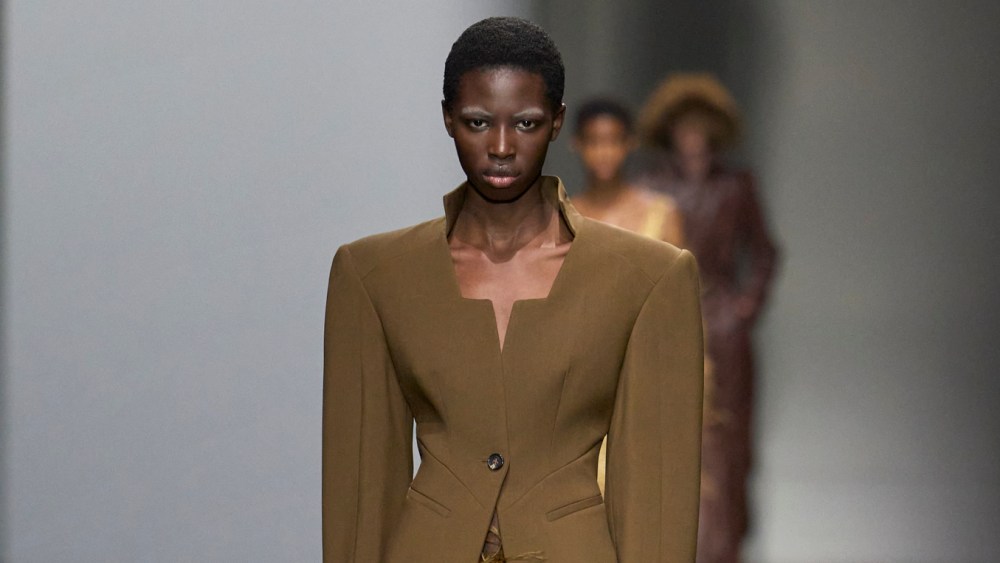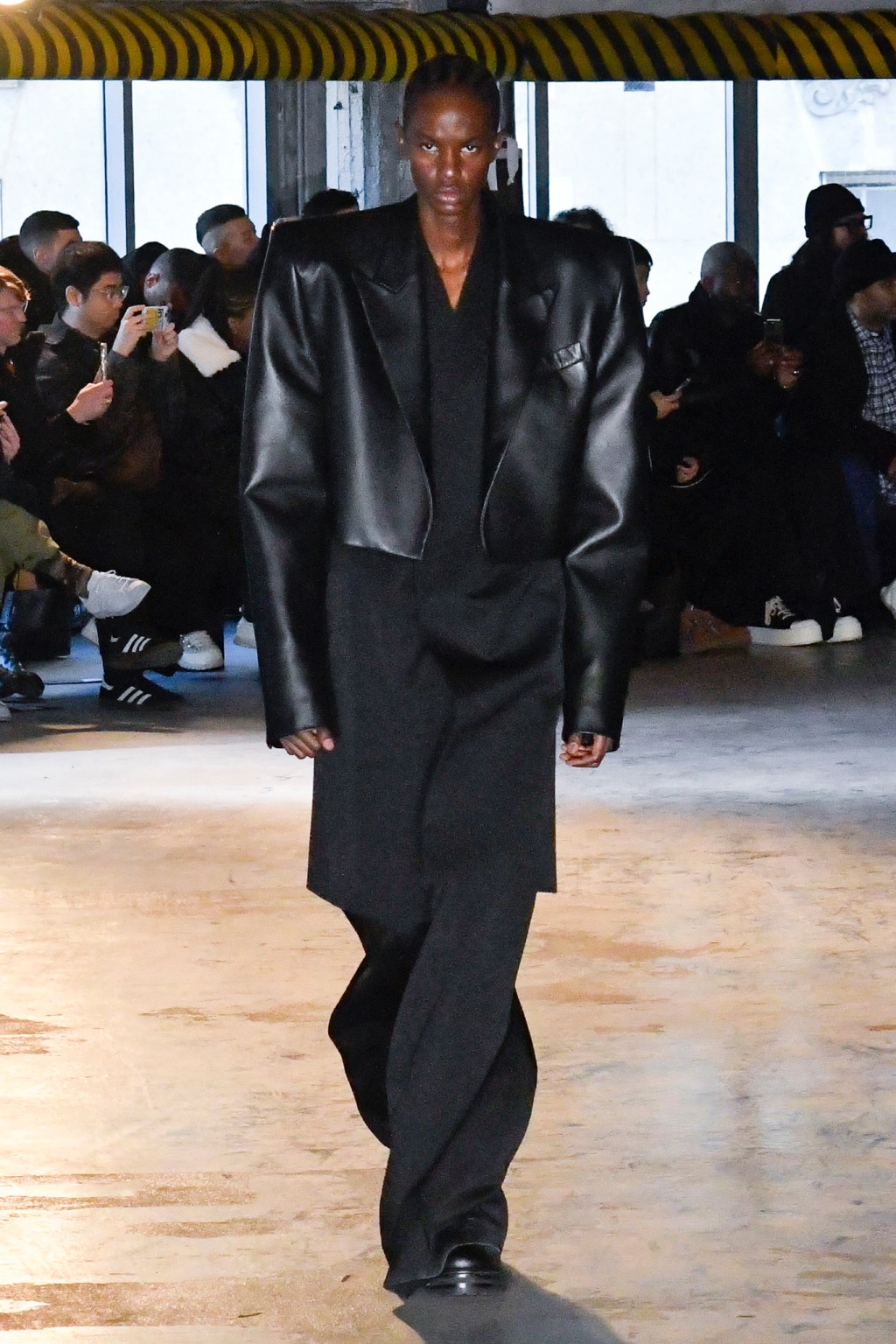At the 2024 Paralympic Games this month, wheelchair basketball player Courtney Ryan is competing on the US women’s national team for a shot at gold. But prior to her Paralympic run, the California native played for the Sydney Metro Blues in Australia. That’s because despite boasting some of the best wheelchair basketball athletes in the world, and both men’s and women’s teams bringing home medals in the last two Paralympics games, the US has no professional wheelchair basketball league. That means that elite US players, who represent the country in matches across the world, don’t have the opportunity to receive full-time income from playing their sport in their home country.
While the pay disparities between men’s and women’s sports have been getting increasing attention as of late, the gap in opportunities for para athletes is less widely reported on. Here, Ryan talks to PS about what it’s like to try to play on Team USA for a sport that doesn’t have a national professional league.
What It’s Like to Play Wheelchair Basketball Overseas
After she was injured playing soccer during her junior year of college, Ryan adapted to life as a full-time wheelchair user. Sports had always been a huge part of her life, but during her early rehabilitation journey she lost her connection to them. So when she was introduced to wheelchair basketball two years after being injured, “it felt like I was home,” she tells PS.
Ryan eventually received a scholarship to play wheelchair basketball at the collegiate level at the University of Arizona, one of only six schools in the country with a women’s wheelchair basketball team. Ryan trained six days a week while completing her studies, and in 2013, made Team USA’s women’s wheelchair basketball team.
Because there is currently no professional league in the US, wheelchair basketball athletes who want to continue their careers beyond college must travel overseas. And that’s just what Ryan did. In 2017, when Ryan was invited to join the Sydney Blues in Australia, she swiftly took the chance on a new adventure.
Playing in Australia allowed Ryan to continue her training and make money participating in a sport she loves and excels at. But there are downsides to playing internationally. “It can get very lonely,” Ryan says. “You’re leaving family and what you’re used to here in the States for this opportunity to play and get paid, but then you’re training by yourself a lot because your teammates who all live in Australia have bigger lives outside the sport.”
Playing internationally can sometimes feel like a temporary solution, one that raises future problems that will need solving. For instance, what happens when you want to return home to family and friends? “It’s really hard to sustain a job and play at the elite level, so you’re balancing this question: do I want financial stability or do I want the opportunity to go play overseas for a few months and then come back to not having a job?”
Why Doesn’t the US Have a Professional Wheelchair Basketball League?
If the US is full of talented wheelchair basketball athletes, why doesn’t the country have a league similar to the overwhelmingly successful NBA and WNBA? Ryan suggests that it is “societal expectations of disability that influence the lack of visibility for wheelchair basketball, and adaptive sports overall.”
Disabled people are often seen as less than, meaning adaptive sports rank lower in people’s perceptions of athleticism, particularly at an elite level. In society, we continue to look at disabilities as a bad thing, but there’s so much you can learn from people who have disabilities. These para-athletes are doing the same level of training, working just as hard, and have the additional challenges of disability,” Markeith Price, Paralympic Track and Field athlete, tells PS.
Parasports are inventive – they reconsider the ways sports have always been played and imagine otherwise. But when it comes to sports, a lot of nondisabled people are tied to nostalgia or tradition. “People feel they already have their [sporting] heroes, the people they look up to and then compare other athletes to,” Price says. “But we have to change the narrative.” This shortsightedness often means viewers are comparing adaptive athletes to their non-disabled counterparts, instead of seeing the unique value and skills in each of them – and the unique appeal and interest in parasports on a whole.
Although viewership for the Paralympics continues to rise, the adaptive sports movement overall lacks visibility and therefore, isn’t seen as a lucrative investment for corporate sponsors that typically invest in sports. As it stands, Ryan says “We’re missing the visibility factors to promote and get adaptive sports out there.” That means parasports continue to lack the funding to create and sustain professional leagues, which in turn keeps their visibility low. If those talking points sound familiar, it may be because women’s sports have historically gone through a similar struggle. Right now, the WNBA has been enjoying a surge in popularity that’s helping prove that women’s sports have the mainstream appeal that deserves major investment. So do parasports, but they haven’t necessarily had their “Caitlin Clark moment” quite yet.
Ryan agrees that without mainstream visibility, the sport will not experience a growth in commercial success. “Last night, I was scrolling through TV and I saw that the USA [men’s basketball team] was playing against Canada and it was live-streamed on FS1, whereas [the USA women’s wheelchair basketball team] was just in China playing against the top three teams and we were reliant only on a Facebook Live stream.” How can we create noise around adaptive sports if people cannot watch and support them easily?
When considering the barriers to establishing a professional wheelchair basketball league, Ryan says even finding space to train efficiently is difficult. She has been told by various courts in LA that “they don’t have the space and time to fit us in, or they didn’t want us there because they were worried that our tires would ruin their floors.”
With increased representation of the sport, specifically at the pro level, Ryan believes wheelchair basketball, and adaptive sports more broadly, can work to “change the stereotypes and provide more opportunities for all disabled people as a whole.”
For Ryan, she says the sport has challenged her idea of what “I thought my life was going to be like when I first became disabled.”
Her hope is that with a pro league, young disabled folks will be able to do the same. “When I played soccer, I had the incredible opportunity to watch Brandi Chastain, you know, rip off her shirt. That was an iconic moment I always looked up to. So if we’re able to provide that same idea for younger disabled people and their families, to showcase the opportunities that are out there for them, that is also building a better and stronger community.”
Hannah Turner is a disabled writer and journalist living with complex chronic illnesses. Her writing focuses on disability, anti-wellness culture, and pop culture. Her words have appeared in many places, including PS, Refinery29, Mashable, and Dazed.



